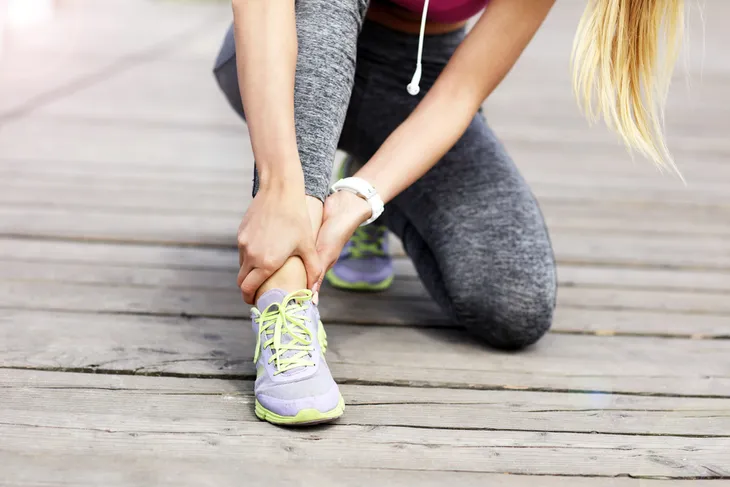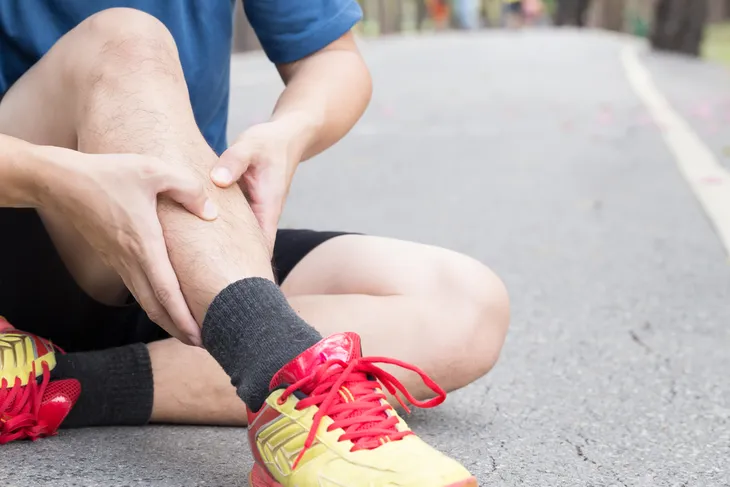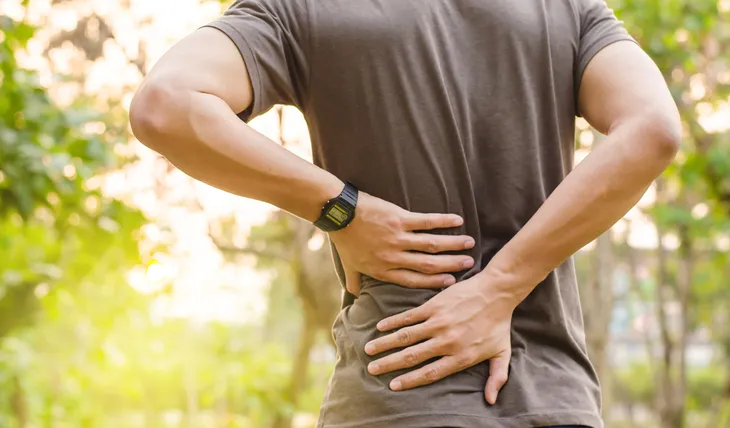They say “no pain, no gain,” but if you’re literally getting injured while you’re working out, then you’re probably doing it wrong or pushing yourself a little too hard. While working out is a great way to manage stress and boost your metabolism, getting hurt is not going to help your routine at all.
Even those who exercise on a regular basis are still prone to injuries, so even seasoned athletes take precautions. Here are seven of the most common workout injuries, and how you can run around them…
Tendonitis
This is when the tendons connecting bone to muscle become irritated, which causes inflammation and pain. This can occur relatively slowly over time, or can be the result of a more serious incident, according to WebMD.
Sporting activities that are commonly associated with tendonitis include tennis, golf, skiing, and baseball (from throwing), adds the site. The best way to avoid this problem is to stretch properly before exercise and to ensure you have a good strength in the muscles surrounding the tendon, it says. However, there are a number of non-exercise related causes of tendinitis, including poor posture, arthritis, and sometimes even an infection, says WebMD.
Foot/Ankle Pain
Men’s Fitness says this comes down to poor posture from sitting in one place for too long. This leads to a chain reaction of sorts that causes rounded shoulders, which then shifts weight forward on your feet when you’re standing, it adds. “Take that misplaced center of gravity and put it into running shoes, which naturally tip you forward with a heel higher than the toe, and your feet and ankles start to bear the brunt of any impact,” it explains.
The solution if you’re experiencing foot or ankle pain from running (or other standing exercises) is to find a running shoe that has a lower-profile heel, says the source. Basically, any shoe that spreads out the impact across your entire foot (including walking shoes or tennis shoes) can help avoid problems, explains Men’s Fitness.
Ankle Sprains
LiveStrong says that “twisting an ankle” as it’s commonly referred to can happen both while running outdoors and on a treadmill. “The biggest problem running indoors on a treadmill is losing your focus and accidentally stepping half on and half off the treadmill while the belt’s still moving,” explains the source.
Running outside on uneven terrain can also cause an ankle sprain, it adds. The site suggests using the clothing clip that shuts off the treadmill if you fall off (assuming the machine has that feature). If you’re jogging outside, try to stay on level ground like sidewalks or a park, and try to avoid stepping on and off curbs if possible, it offers. Also keep an eye open for potholes and other hazards that can throw your ankle out of whack.
Shin Splints
Everyone has probably experienced shin splints at one point or another, and they can be very painful and temporarily debilitating. It’s characterized by the pain that shoots down the front of your lower leg – also known as the shin, in case you didn’t already know that.
VeryWell Fit says that shin splints are more common in beginner runners, mainly because they try to take on too much distance too soon. Running on harder surfaces can also aggravate those muscles, it adds. The site actually offers seven ways to avoid shin splints, from taking it slow at first, getting properly supporting shoes (with adequate cushioning), and doing exercises such as heel raises or toe raises to strengthen lower leg muscles and lower risk of this common injury.
Lower Back Strain
Having some back soreness after doing exercises that involve core or back muscles is normal, explains Shape. “It occurs due to your body’s natural inflammatory reaction to exercise causing microtrauma to the muscles and surrounding connective tissue,” it says.
However, while some pain is acceptable, soreness is not the same as an injury, adds the site. Muscle soreness after exercise “tends to develop gradually after exercise,” whereas acute pain that occurs suddenly during a workout could be cause for alarm, it explains. You may also have other symptoms such as numbness or tingling. Other sources point out you can avoid lower back injuries by strengthening your core muscles (abs and back), lift weights properly (ask for help from a trainer), and even by stretching your hamstrings first (the muscles on the upper back of your leg).
Rotator Cuff Injuries
The group of muscles that stabilize the shoulder joint are susceptible to injury, notes LiveStrong. If you’ve got exercise-related pain when you reach behind you or to the side, then it could be a sign you’ve damaged your rotator cuff, it adds.
Exercises that can affect the rotator cuff include repetitive motion activities such as swimming and throwing, it explains. The answer is to strengthen your rotator cuff muscles as part of your upper-body program (don’t overdo the weight), and make sure you’re using correct posture to avoid compressing the shoulder joint, it adds.
Iliotibial Band Syndrome (ITBS)
This injury affects runners often, and can cause severe pain on the outside of the leg, according to Runners World. “Because the most notable symptom typically is swelling and pain on the outside of the knee, many runners mistakenly think they have a knee injury,” explains the source.
It’s actually the ligament that runs down the outside of the thigh from the hip to the shin that’s causing the pain, although the band can rub against the knee joint and cause inflammation, it adds. ITBS is typically caused by the leg turning inward too often – and the common culprits are worn shoes, running downhill, running too far, or decreased strength of the muscles surrounding the hips says the source. This injury can actually affect veteran runners almost as commonly as beginners, it adds.










